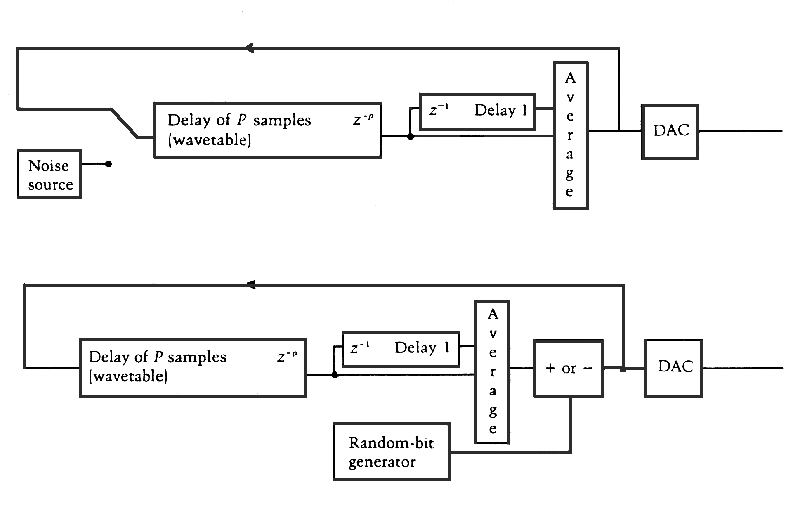The resonator sounds so realistic because it is in fact a physical model of the string, with the delay line corresponding to the length of the string, along with the filter and feedback creating the basic resonance. In the last examples below we substitute a noisy excitation function (bowing on the bridge of an actual cello) for the pluck, and then, just like the instrument, when the resonator is tuned to an open string on the cello, the result is striking similar to a bowed note on the same string.
The model applies equally to a string fixed at both ends or a tube open at both ends, at least in terms of the resonant frequencies all being harmonics of the fundamental. If the sample is negated before being fed back into the delay line, the resulting change of phase models a tube closed at one end, which results in only the odd harmonics being resonant, and lowers the fundamental frequency by an octave, since the negation effectively doubles the length of the delay line. For the basic model, the fundamental resonance equals
SR / (p + 1/2)
where SR is the sampling rate, and p is the length of the delay line.

Plucked string with doubling of the delay line lengthPlucked string with negation (odd harmonics, 1 octave lower) with doubling of the delay line lengthPlucked string improvisation showing influence of different initial random values
Bowing on bridge as an excitation functionBowing on bridge resonated on C, G, D, ...
References:
Karplus, K. & A. Strong, 1983. Digital synthesis of plucked string and drum timbres. Computer Music Journal, 7(2).
Truax, B. 1994. Discovering inner complexity: Time-shifting and transposition with a real-time granulation technique. Computer Music Journal, 18(2), 38-48.